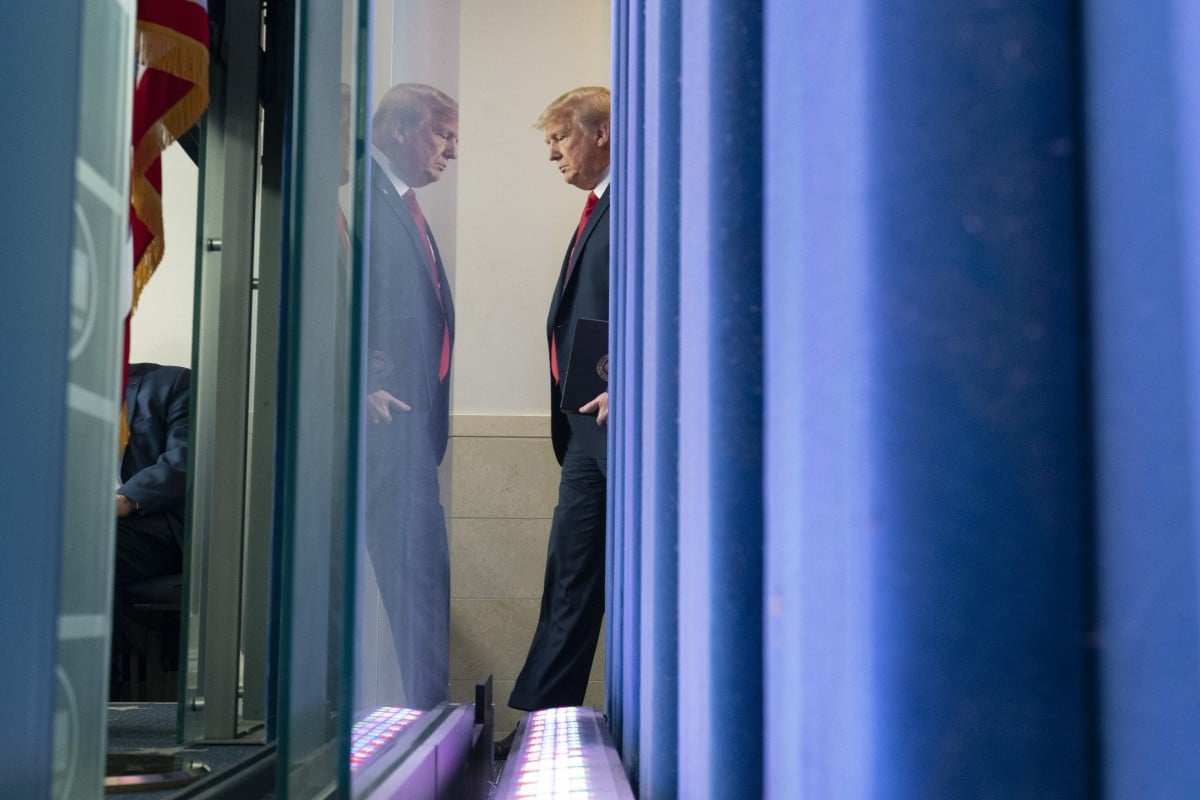White House faces heightened scrutiny over media reports of coronavirus intelligence in November
Media reports say US intelligence started tracking an illness in China in November
The National Centre for Medical Intelligence denies the existence of a coronavirus-related assessment that month

Robert Delaney
Published: 6:14am, 10 Apr, 2020
TOP PICKS
News
Scientific journal admits error in linking coronavirus with China
10 Apr 2020

News
Chinese ventilator makers desperate for parts as demand hits 1 million
9 Apr 2020

News
Chinese supercomputer and American doctors clash over Covid-19 diagnosis
9 Apr 2020

News
Signs coronavirus was spreading in Wuhan earlier than thought: study
9 Apr 2020

News
Japan set to pay its manufacturers to leave China
10 Apr 2020

News
How China’s army of food delivery drivers helped keep country going
7 Apr 2020

News
Low antibody levels raise questions about coronavirus reinfection risk
8 Apr 2020

News
Trump threatens to cut off WHO funding over agency’s handling of outbreak
8 Apr 2020

News
Animals hunted, traded and homeless host twice as many viruses that infect us
10 Apr 2020

News
Symptom-free Covid-19 patients must be reported within two hours: China
10 Apr 2020

454

US President Donald Trump arrives at a coronavirus task force news conference at the White House in Washington on Wednesday. Photo: Bloomberg
US media reports that American intelligence officials had started tracking in November a rapidly spreading illness in China – now known as the Covid-19 pandemic – have raised questions about what and when the White House knew about the gathering threat.
CNN and ABC reported on Wednesday that an agency of the US defence department’s intelligence arm began holding meetings about the illness in China more than a month before Beijing notified the World Health Organisation on December 31 of the spreading contagion.
The National Centre for Medical Intelligence (NCMI) tracked details of the apparent epidemic through “analysis of wire and computer intercepts, coupled with satellite images,” according to ABC.
The NCMI issued a rare public statement just hours after the ABC and CNN reports, denying the reported time frame.
“As a matter of practice, the National Center for Medical Intelligence does not comment publicly on specific intelligence matters,” NCMI director Colonel R. Shane Day said in a statement.
“In the interest of transparency during this current public health crisis, we can confirm that media reporting about the existence/release of a National Center for Medical Intelligence Coronavirus-related product/assessment in November of 2019 is not correct,” Day said. “No such NCMI product exists.”
One source close to the US intelligence community in Washington confirmed to the Post that the November time frame was not accurate.
However, other details of the US media reports comport more closely with the timeline of when US President Donald Trump’s administration might have known about the threat and began to take the matter seriously, an issue that has been frequently questioned during the daily White House coronavirus task force briefings.
This week, The New York Times and Axios reported details of memos, written and circulated through the White House by Peter Navarro, Trump’s top trade adviser, beginning in late January, when the president was still playing down the coronavirus threat. One of the memos, dated January 29 warned of a “full-blown Covid-19 pandemic”.
The ABC report added that the NCMI meetings drew in the White House’s National Security Council in December and eventually reached US President Donald Trump’s desk sometime in early January. CNN said the alert was raised in a White House daily intelligence briefing on January 3.
The gravity of the outbreak was apparent to other governments in region by that time.
For example, the Post wrote about China’s alert to the WHO on January 1. Airports in Hong Kong, Singapore and Taiwan had begun tightening fever surveillance of arriving passengers by January 3 to prevent what was happening in China from infecting their populations.
A week later, a Chinese team in Shanghai published the gene sequence for Sars-CoV-2 on an open online platform on January 11.
With the exception of Trump’s decision on January 31 to bar entry to the US by foreigners who had recently travelled to China, Trump and other senior members of his administration continued to play down the threat throughout January and February despite evidence that the disease was spreading in several US cities including New York.
Trump denied that he had seen the Navarro memo, saying in a press briefing on Monday that he had learned of them a few days earlier.
Asked on Wednesday about the ABC report, he said: “When I learned about the gravity of it was sometime just prior to closing the country to China.”
“And when we closed up the flights coming in from China and various other elements and then, as you know, we closed up to Europe, so I don’t know exactly, but I’d like to see the information,” he said.
Additional reporting by Mark Magnier
Robert Delaney is the Post’s North America bureau chief. He spent 11 years in China as a language student and correspondent for Dow Jones Newswires and Bloomberg, and continued covering the country as a correspondent and an academic after leaving. His debut novel, The Wounded Muse, draws on actual events that played out in Beijing while he lived there.
No comments:
Post a Comment